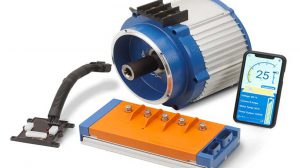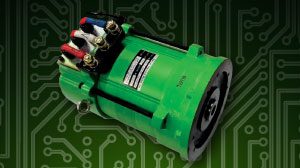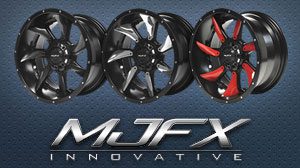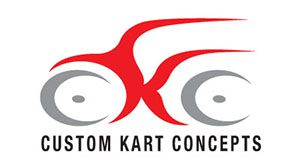By: Matt Vallez
A portion of this article was originally published in the September / October 2005 Golf Car News Magazine. It has been updated to reflect current events.
When you hear AC/DC what is the first thing that comes to mind? I think of a rock band from the 1970’s that played some of the best songs I can remember. When you talk AC/DC in the context of golf car motors, you are speaking a hot topic that is being explored on every level within our industry. The best performing motors available for golf car applications currently are AC motors. They have more torque and are more efficient than either DC series or DC shunt wound motors. AC motors go further on a charge and have a lower cost per horsepower than DC motors. The main drawback to AC is the cost of the systems currently available, when this changes, DC motors will go the way of resister speed control.
AC motors for golf car applications have been available for 13 years, but in the last few years they have become more popular. They are currently offered as a premium option for Western Golf Cars and through Hi Performance Golf Cars. Hi Performance Golf Cars Inc. WWW.hiperformancegolfcars.com are the manufactures of the only AC systems currently available for golf car applications. Brian and Darren Seymour cut their teeth developing motors for industrial use and the electric car industry and their company has done so for 30 years. More recently they were able to develop an AC induction electric motor system for golf cars and neighborhood electric vehicles, and like the rock band from the 1970, it kicks ass.
Well, things have changed a lot in the last three plus years. The top two paragraphs were written three years ago and were an accurate prediction as to what was currently happening. The cost came down far enough for EZGO to switch the motor and controller to AC power, in their new, long awaited, RXV fleet golf car. This vehicle is a revolution in golf cars. The AC power is just the starting point.
AC power has been the power method of choice for the fork lift industry for several years. EZGO has taken this technology and placed it into a golf car. They did an excellent job of it from what I have seen so far. EZGO decided to use 48 volts of power for the new system a departure from the 36 volt system that only EZGO was previously still using. They started with 4, 12 volt deep cycle Trojan batteries that make up the new EZGO power plant. The batteries are tucked into a composite material battery box sitting on welded steel with DuraShield epoxy coating frame as the foundation.
The heart of the system is the 48 volt AC controller that also converts the DC battery power to AC. This allows EZGO to use a brushless 3-phase induction motor. The brushless feature is the key aspect that puts this system, head and shoulders above the DC step ex motor controller system. You feel it as soon as you touch the accelerator pedal, instant complete control of the car. Want to go faster, press down, slow down, let up. The new EZGO RXV is so responsive you have to remind yourself you are sitting in a golf car and not a sports car, at least for the first 10 mph. This feeling is the benefit of having an AC system. The accelerator pedal is so responsive you may never use the brake, or as EZGO has named it the emergency brake.
The AC systems are also more efficient, with power cost’s going higher and everyone turning green these days this is an important feature. Being able to run an extra round between charges or just have the charger on for a shorter cycle can be a huge benefit. Time will tell if EZGO has put together a golf car that is as remarkable as it drives. The other manufactures have to be watching how well this AC system actually performs out in the real world. EZGO resisted the change to 48 volt for a long time, over ten years. Will the others resist the change to the AC motor and controller combination?
Almost as exciting as the AC system in the new EZGO, was the overall level of design and technology and thought involved in the finished product. It is easily five years ahead of anything manufactured outside the USA. With all the price pressure from less expensive golf cars manufactured elsewhere, it is reassuring to see the clear distinction between the latest the USA can bring to market and all the rest.










